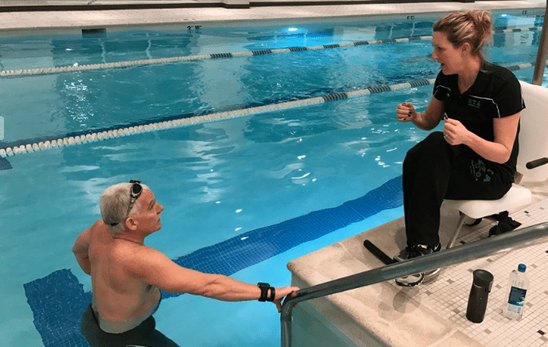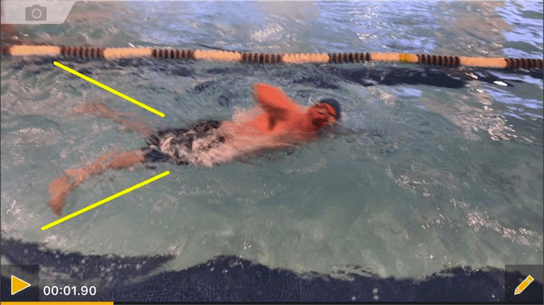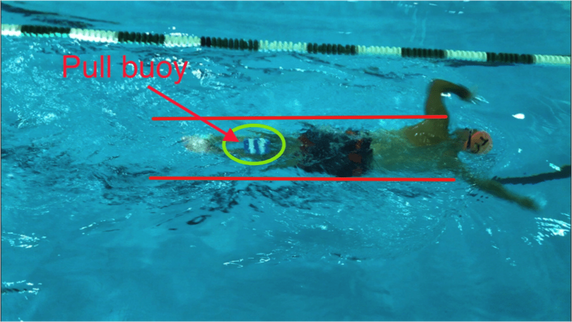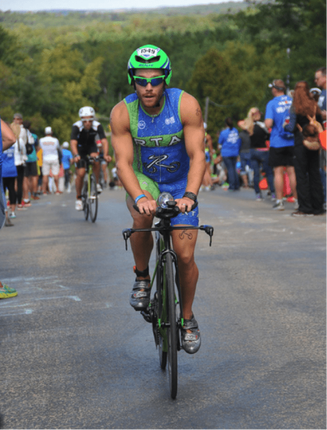|
Technique in Triathlon is Key! (continued) As a professional triathlon coach who regularly works with athletes 1 on 1 to improve their technique and form, I have seen a lot. I have also come to realize in many cases athletes don’t know what they are doing is incorrect. This is because they were never told how AND why they should be moving differently. In other cases, athletes know they are doing something wrong, but can’t figure out what or how to improve it. Either way, it needs to be corrected and it will make a big difference once it is. In part 2 of this 3 part series will continue to examine the most common technique mistakes we see among triathletes and how to fix them. If you missed part 1, you can check it out here. SWIM: Leg Flare Do your legs flare out or scissor when you kick? This flaw is especially common when athletes rotate and breathe. The funny thing is you may not realize you’re doing this until you see a video of yourself. When your legs flare out, it creates a tremendous amount of drag. Your legs essentially become underwater parachutes To correct this, try brushing your big toes together when kicking. If you can do this, you will know your legs are staying close to each other. This is great because you don’t need someone constantly watching over you. You can also try swimming with a pull buoy between your ankles. If the buoy comes out, you’re not keeping your legs together. This will be challenging at first, but soon it will become effortless. Another way to train your legs to stay closer together is by swimming with a band (or old tire tube) around your ankles. This is by far the most challenging of the three suggestions above. However, it will pay off big time! I had an athlete swim like this exclusively for 2.5 weeks. By the end of this time, his average pace for his 500 yard TT went from 1:50/100 down to 1:35/100. BIKE: Climbing in Aero When you do this you are unintentionally making it more difficult on yourself. This is true for a few reasons. You get a negligible aero dynamic benefit when you’re going below 16 mph and even less when you dip below 14 mph. Further, when riding in aero, your lungs are not fully open as you are hunched over. Not only that, but you’re also unable to maximize your power in this position on your bike. Instead, sit up tall and proud in your saddle. By adjusting your position, you will open up your lungs and maximize your power as you move up the hill and pass others. Similar to cycling cadence, as you run, you should strive for a cadence of about 90 (or 180 for both feet). You may have noticed many elite marathoners appear to float along as they run, barely touching the ground and at a cadence in the high 90’s. RUN: Low Run Cadence Run cadence is important for a couple reasons. First, the higher your cadence, the less amount of time your foot is on the ground. The less time your foot is on the ground, the less impact your body absorbs with each stride. Second, cadence is the same as stride rate. And stride rate multiplied by stride length equals speed. Stride Rate x Stride Length = Speed Most untrained athletes run at a cadence of about 80 (or 160 for both feet). If you can increase your cadence by just 5 steps per min (per single foot) while holding your HR steady, you’ll be able to knock off 2 minutes over 10k. Anyone can have a high cadence when sprinting or running fast, but most cannot sustain that pace. The trick is learning to increase your cadence (or turnover) when running slow. This may sound paradoxical, but the first few times you practice increasing your cadence you will notice your HR is a little higher then normal (at the same pace). By keeping your pace extra slow you will still be able to run comfortably with your new, higher cadence. Eventually, your HR and body will adapt to the quicker foot turn over and you can slowly start to increase your pace. A couple tools you may find helpful include a Garmin watch or something similar that automatically counts your cadence as you’re running. Just make sure you set ‘cadence’ as one of your display fields. This same device will give you ‘average cadence’ at the end of your run so you can track progression over weeks and months of practicing. Another tool athletes find helpful is a metronome. This acts as an audible cue for you. Set the metronome to 180 beats. For each beat, one of your feet should be landing on the ground. You can download a free metronome app on your phone and run with it. Make sure you control your run pace when you do this. REMEMBER Identifying a flaw is only the first step. You must also learn the proper way to move so that you can do it correctly. Then, most importantly, practice, practice practice. Frequency and repetition is your best friend. The goal is to eventually be able to move this way subconsciously. We hope you enjoyed this article. Stay tuned for part 3 of this series. All 3 parts will be listed under the “Training” section of our blog.
To learn more about our 1 on 1 coaching sessions click here. If you would like to arrange a 1 on 1 session with one one of our coaches, please CONTACT us. Comments are closed.
|
Categories
All
Archives
July 2024
|
RTA TriathlonRTA is a comprehensive triathlon coaching organization and fully supported USAT sanctioned triathlon club.
We are based in Ridgewood, NJ and coach triathletes of all abilities from across the country. Our mission is to make you a better triathlete. Contact us when you're ready to take your "game" to the next level. |
|
|
Quick Links |
Let's get social
RTA Triathlon
Copyright © 2022
Copyright © 2022





 RSS Feed
RSS Feed
